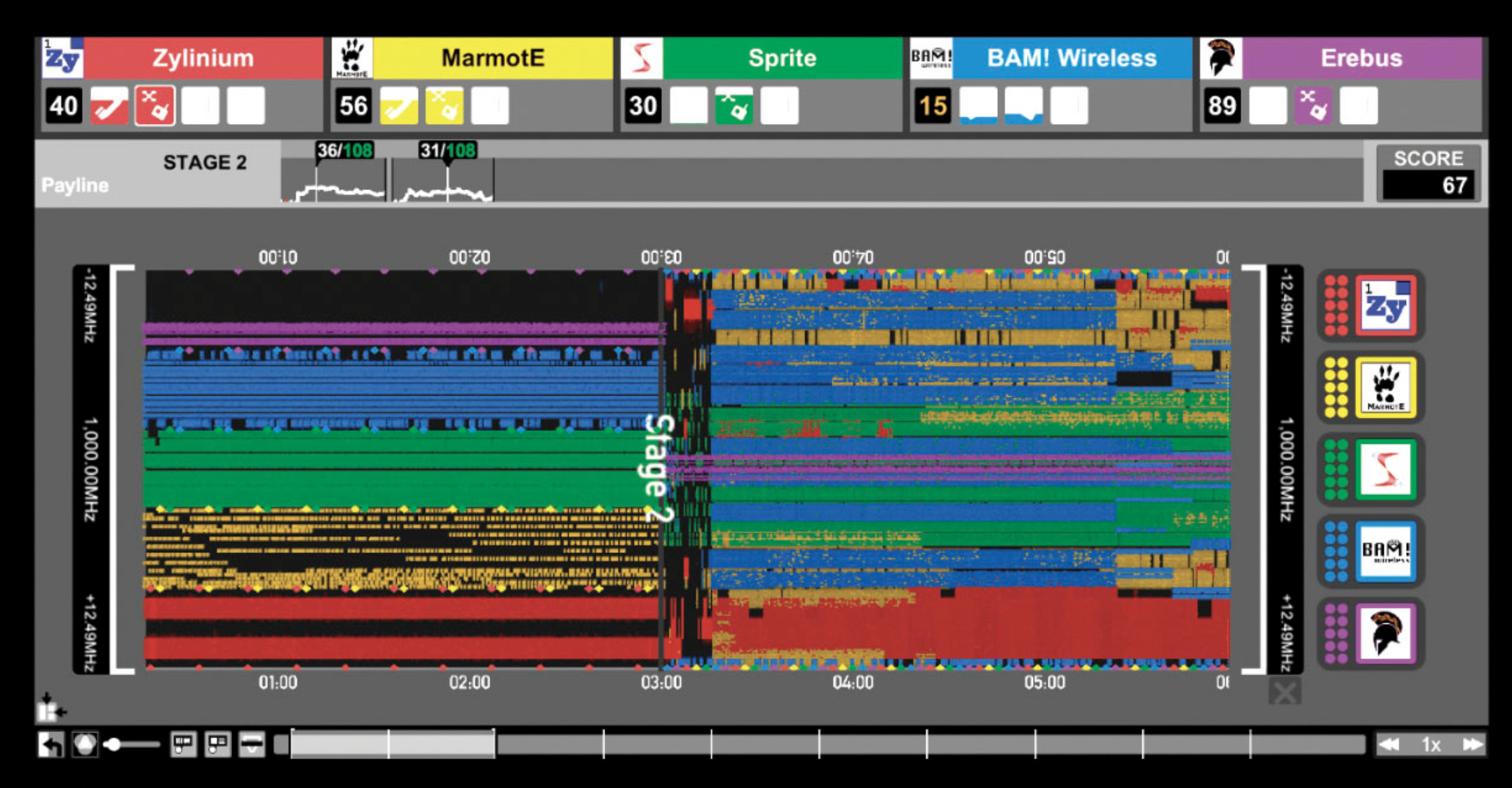
The Military Wants AI to Manage America’s Airwaves
June 11, 2019 In the internet era you’d be hard pressed to find a more valuable resource than radio spectrum. Technically owned by the public, US spectrum is managed by the government (the FCC and NTIA), then doled out to corporations via license auction. These licenses grant leasers the exclusive rights to use the frequencies for wireless or radio communications.
Due to the laws of physics, there’s only so much wireless spectrum available. And much of it isn’t suitable for use for modern wireless communications, either because transmissions at many frequencies can’t travel very far, or can’t penetrate things like building walls.
With wireless spectrum usage growing at a rate of 50 percent per year thanks to the rise of the mobile internet, engineers have turned to spectrum sharing and frequency-hopping techniques to more efficiently utilize this limited resource.
But given that governments, consumers, and corporations are all vying for a slice of the pie, coordinating this massive spectrum sharing effort (while avoiding interference) may prove too complicated for mere mortals.
Enter the Defense Advanced Research Projects Agency, or DARPA. For two years, DARPA has been conducting what it calls its Spectrum Collaboration Challenge to develop AI-managed radios that can help users share spectrum far more efficiently.
At the heart of DARPA’s AI experiments sits what the agency calls the Colosseum, a massive radio-frequency testbed designed to simulate real-world spectrum use.

According to DARPA, the Colosseum occupies 21 server racks at the Johns Hopkins University Applied Physics Laboratory in Laurel, Maryland. Requiring the same cooling as roughly 10 large homes, Colosseum can emulate more than 65,000 unique interactions across 128 radios simultaneously—with 64 field-programmable gate arrays performing more than 150 trillion floating-point operations (teraflops).
According to DARPA Program Manager Paul Tilghman, the agency’s Spectrum Collaboration Challenge is letting participants take full advantage of the Colosseum’s processing power to help build the AI spectrum management systems of tomorrow (often called “cognitive radio”).
“SC2 is a three-year open competition in which teams from around the world are rethinking the spectrum-management problem with a clean slate,” he wrote in IEEE Spectrum. “Teams are designing new radios that use artificial intelligence (AI) to learn how to share spectrum with their competitors, with the ultimate goal of increasing overall data throughput.”
Competing teams will be vying for more than $4 million in prizes to be doled out in Los Angeles this October. As part of the competition, Colosseum is simulating a scenario where up to five radio networks share access to the same frequencies in a one kilometer area. AI systems are tasked with ensuring that these networks all play nicely with one another.
“We would determine how successful a given match was based on how many tasks, such as phone calls and video streams, were completed,” Tilghman says.
More efficient AI spectrum management will deliver major benefits for the American public. Cognitive radio opens the door to wireless spectrum (which again is technically owned by the public) becoming a sort of commons shared by everyone, as opposed to the exclusive domain of giant corporations—which often buy spectrum they don’t use, either to hamper competition, or to make a profit selling the spectrum later after its value has appreciated.
More efficient AI spectrum management could also lead to better, faster broadband networks. It can also help with the emergence of entirely new broadband alternatives like white space broadband, which hopes to leverage the vacated TV channels from classic, broadcast antenna TV created by the shift to digital television to bring broadband to underserved areas.
Author and activist Cory Doctorow has been writing about the potential benefits of cognitive radio for years. He says he’s not thrilled with the effort being under the purview of the Department of Defense, but believes the benefits of cognitive radio will be well worth it.
Doctorow told Motherboard that one obstacle to AI-managed shared spectrum is longstanding resistance by giant wireless carriers like AT&T and Verizon, who historically haven’t been keen on sharing a valuable resource they’d prefer to have exclusive access to.
"Generations of exclusive spectrum licenses—with paid spectrum auctions in later years—have convinced the telecom sector that it owns the spectrum the American people generously allow it to use,” Doctorow says.
“In addition to the technical hurdles of getting spectrum-hopping, cooperative devices to play nice with each other and their inert, fixed-spectrum forebears, we will also have to convince the FCC to un-capture itself from the industries it regulates so that it takes action in the public interest,” Doctorow says. “That might be the hardest challenge of all."
So far, DARPA says that early competitors have been hugely successful in showing how AI-managed radios can deliver more bandwidth than exclusive spectrum use, though a timeline for deployment is unknown. Getting these efforts out of the labs and past the nation’s bureaucrats and politically-powerful mobile carriers will be a completely different battle, than even AI may struggle to solve.


